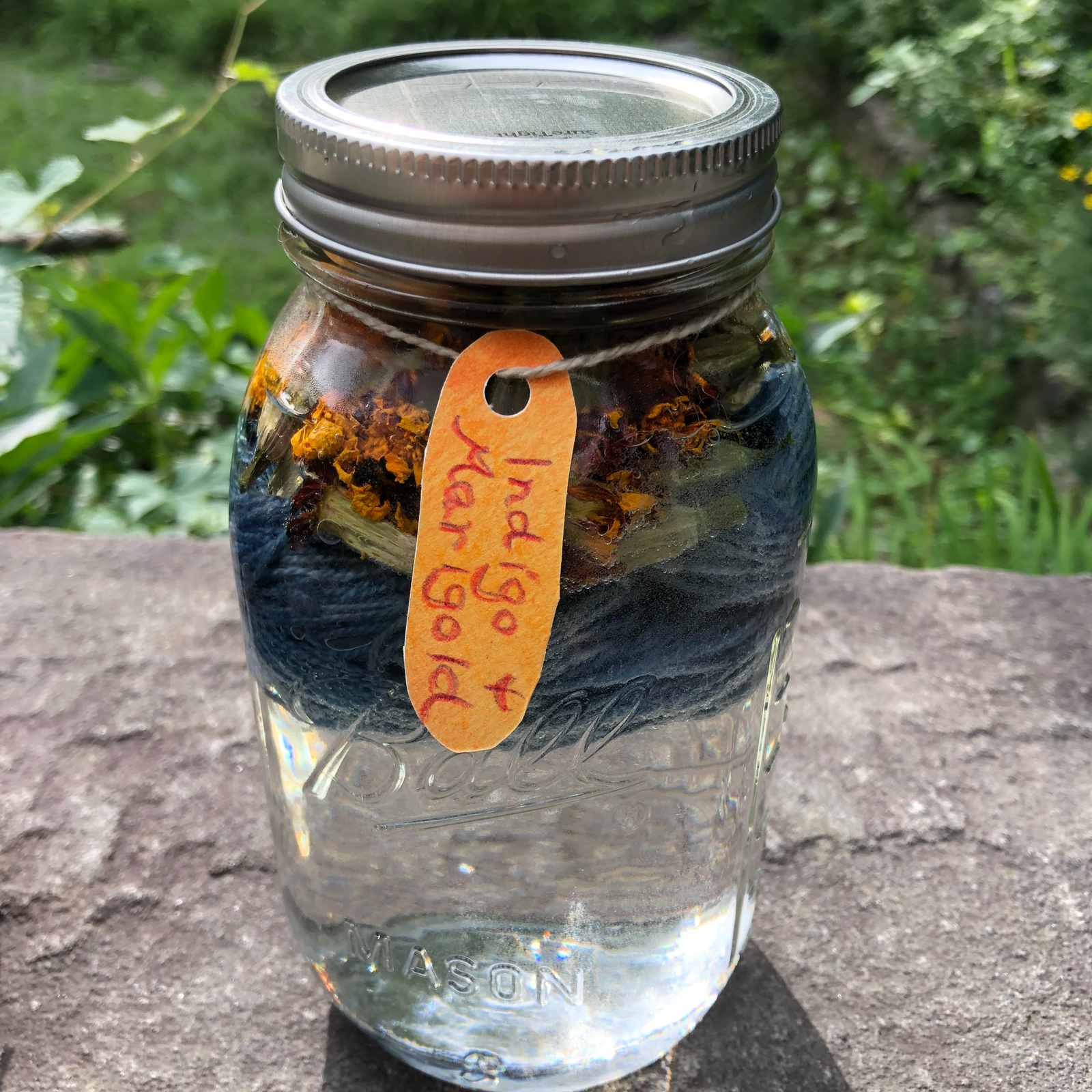At 8:30 am, which is when we usually start school, I was still nursing the baby in bed so the girls got started with their schoolwork independently. Natalie worked on organizing her school materials which she had piled up everywhere and Leah sharpened all of her colored pencils. Then they both continued their work for the "ABC statistics" lesson by Marilyn Burns, from A Collection of Math Lessons: Grades 3-6
In this activity, we are collecting data to figure out the frequency with which each letter of the English alphabet is used in printed material. Leah and Natalie each had to choose ten sentences, using at least two books, and record how often each letter appeared in those sentences. This takes longer than it sounds... about a week. They tallied one or two sentences each day.
They then worked together to compile their data and ranked the letters by usage.
This afternoon I was ready for the conclusion of the ABC statistics lesson. I had the "real" answers, provided in her book, and wrote them on the flip side of our chalkboard. Before the big reveal, I asked them, per her suggestion, what they expected to happen when the answers were revealed. Did they expect a perfect match? What might make our study more or less statistically accurate? What kinds of materials would't have been good choices for this activity (early readers, poetry)? What would surprise them? What would disappoint them? And so on.
When they were ready to see the answers I turned our chalkboard around. They were so interested and immediately hopped up to write their own data beside what I had (have colored chalk ready... it helps keeps things straight) and compare.
Amazingly, our family just received the Nielsen TV Viewing Diary in the mail yesterday and so I was able to open it up after this activity and tell the girls that we were going to participate in a real-life survey. I explained why the envelope had $5.00 in it. And they read all of the information and instructions carefully. Leah even called the toll-free number to ask about how to record shows which we watch via Hulu. We do have an air antenna and can get two or three local channels, which my husband uses for news and weather in the mornings, but we use Hulu for almost everything else we watch. The survey begins tomorrow and the girls are eager to participate. What a great example of Math in an authentic context!!!
Anyway, back to the morning part of our day. When I was done nursing, we had our Circle time. Our poem this week is a short riddle by Emily Dickinson. On Monday I read them the little biography of Emily which was in the front of Poetry for Young People: Emily Dickinson
Our poem is
- HIS bill an auger is,
His head, a cap and frill.
He laboreth at every tree,—
A worm his utmost goal.
After our poem we have been doing Math Facts, reviewing multiplication and division facts. We stand in a small circle and toss a flaxseed-filled beanbag as we chant. The facts are stated in such a way that they go from the whole to the parts, and that they have an ending rhyme. 0 is 0 x 7, 7 is 1 x 7, 14 is 2 x 7, 21 is 3 x 7, and so on.
We have been going up to 12 x 12.
I've decided to switch this morning time to computation starting next week. One quick problem to solve, one for Natalie and one for Leah. There are so many facets of Math that I want to keep fresh, even when we aren't doing a Math block, and I don't think that Math Facts in the AM and word problems or puzzles or mathematical explorations in the PM is sufficient. I think some straight-up computation is also necessary.
After the quick Math we do our Morning Pages. This is creative writing time, visual journaling time, or lessons in composition or mechanics. It varies. Yesterday I revisited the activity from Gretchen Bernabei where we read a piece, the girls came up with truisms, and then found an image in a magazine which went with their truism and with the text. The first time we did this it was NOT a success. Instead of looking for symbolism to go with the theme of the text, they cut out pictures that looked like the characters. I wanted to try again and see if I could encourage them to go deeper.
The piece was a poem by Robert Frost: Out, Out--
I thought this would be a good poem to use because of the last line. Are the people being heartless? Or are they just being practical... life must go on in the face of death, after all.
Leah's truism was "Some distractions are good, some bad" and she picked an image of a woman in the middle of exercising, halfway through doing an abdominal crunch, with her knees tucked up to her chest. Leah felt the image represented the woman being balanced perfectly and waiting for a distraction to tip her up or down. Natalie's truism was "Not every accident has the need to be mourned" and she picked an image of a woman looking through the window to the things which she couldn't reach, having accidentally locked herself out of her house.
Today's Morning Pages activity was writing a friendly letter. They got a Halloween package of treats from their grandmother in MD last night, so it was thank-you note time. They write a rough draft and I edit. The final gets written in cursive on nice stationery, which makes it also Penmanship.
After Morning Pages we take a Nature walk around the yard, dump and refill the bird bath, look for persimmons to harvest, etc. Then we look ahead to goal-setting for the day. I pick what I'm going to make for dinner! My ambitious (as always) to-do list for today was to put up Halloween decorations, sort new baby clothes, wash laundry, organize nursery, research how to grow asparagus hydroponically, research when rose hips are ripe and what to do with them, pay bills, read through the mail pile, wash Zac diapers, put away my clean laundry, and start knitting booties for the baby.
Leah's list was to make green tomato bread for tea time, to do her seal painting (wet on dry) with me, add seal poem to her MLB (we are using a concrete poem, also called a shape poem, "Seal" by William Jay Smith), sew Halloween costume (she's a patchwork quilt, so she's sewing patches on a bandanna, patches on her sweater, patches on her pants, and wearing her old baby quilt as a cloak, plus wearing mis-matching socks and clogs), and making a list of all the things she uses her hands for.
Natalie's list was to pot the pineapple plant she started successfully from a pineapple top), compose her analogies for The Integumentary System (skin, hair, fingernail), bring them to me for an edit, draw the diagrams of skin / hair / fingernail in her MLB, add her edited text to her page, model the turkey neck vertebrae with modeling beeswax (to begin The Skeletal System), read about the skeleton and do the experiments, and to make the smoothies for tea time. I also want her to watch a BBC program How to Grow a Planet: Life from Light, which I just found on Hulu. I think it will go well with Photosynthesis, which we reviewed for The Respiratory System.
We dove into our combination of one-on-one, group, and independent work.
Morning work time ended at noon and the girls took a break for lunch and play until 1:30 pm. Then we reviewed our Latin vocabulary from Lesson VII and started Lesson VIII. After Latin (which we do daily), we did the Big Reveal for ABC Statistics and the Neilsen survey discussion. Then we all got back to work until the end of the school day.
Current Schedule:
8 am - breakfast
8:30 am - morning circle
Poem, Math Fact Review, Morning Pages, Nature Walk, Goal Setting
Morning work time
12 pm - break for lunch and play
1:30 pm - afternoon circle
Latin, Math Problem Solving
Afternoon work time
4 pm - tea time
after tea, finish any unfinished work from goal setting
or write in your plan book anything you want to carry over from today










































 Immersive Experience
Immersive Experience Immersive Experience
Immersive Experience